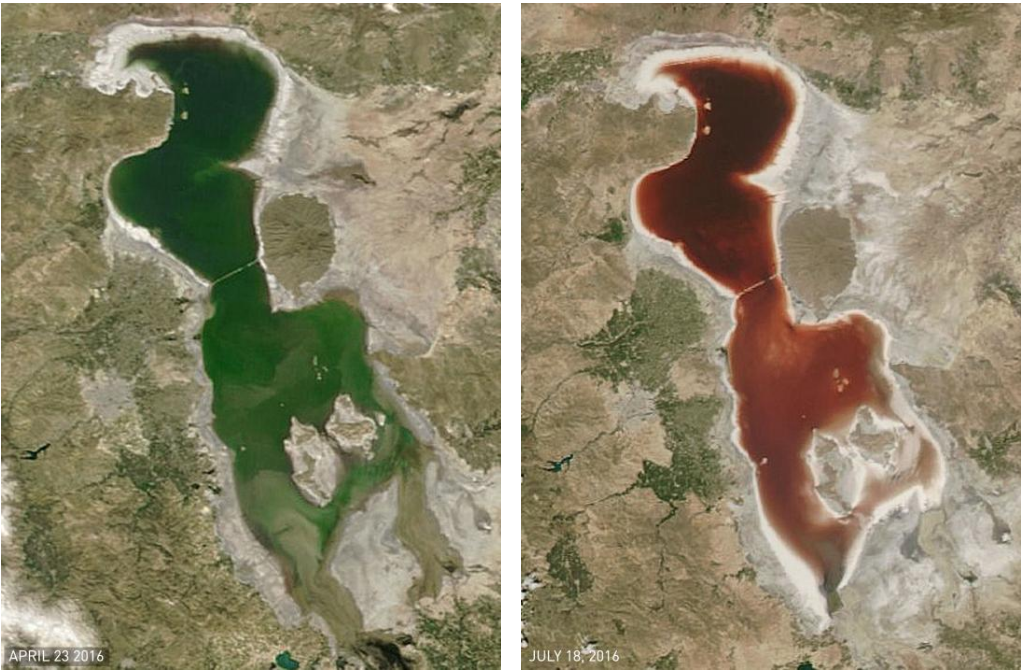Despite claims that Urmia Lake’s drastic shift in color is a sign that restorative efforts have failed to pay off, experts at the Urmia Lake Restoration Program maintain that the lake’s newly-acquired crimson color is a sign of revival.
Satellite images released by NASA last month show a noticeable change in color in Urmia Lake’s water, going from a deep green to a rich red hue. The new color is attributed to the growth of a group of red-pigmented bacteria and algae that thrive in high-salt conditions.
This color shift is believed to be triggered by seasonal changes. Snowmelt and rainfall in the spring infuse the lake with fresh water and keep salt levels down. But as summer progresses, water flow into the lake declines and evaporation increases the water’s salinity. That’s when certain microorganisms can gain the upper-hand in the lake’s ecosystem, according to NASA’s Earth Observatory.
Masoud Tajrishi, ULRP’s deputy for planning, asserts that the water salinity has increased due to the dissolution of salt crystals on the lakebed following the increased inflow of fresh water.
According to the official, this is a positive sign because it indicates that salt sediments are disappearing and the lake’s depth is increasing.
“This is good because otherwise it would be almost impossible to restore the lake since it wouldn’t be able to retain water for long,” he said, adding that the lake’s increased salinity is a step toward full recovery.
The official stressed that these bacteria and algae are harmless to both humans and the environment, and might even pave the way for the reemergence of Artemia (a species of brine shrimp) that feeds on microorganisms.
“The shrimp might appear again if more fresh water is directed into the lake through the cooperation of all relevant bodies as well as farmers,” he said.
Tajrishi said the rise in salinity has created a hospitable environment for the microorganisms, but stressed that the inflow of fresh water must continue lest the lake becomes too salty for the bacteria and algae to survive.
The lake has depleted drastically due to a variety of factors, including the construction of a 15-kilometer causeway to shorten the travel time between Urmia and Tabriz as well as the construction of several dams that have choked off water supply from the surrounding mountains.
Earlier this month, Isa Kalantari, the head of ULRP, said measures to stabilize the lake’s water level have been successful, which means “we can begin the restoration phase” in October to return its water level to what it was more than a decade ago.
Officials have said Urmia Lake will be restored by 2023.


